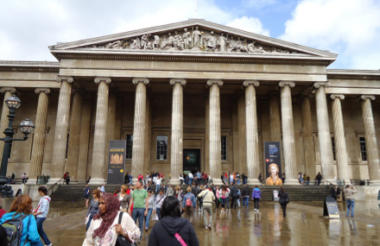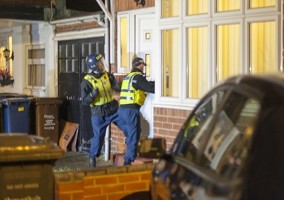The British Museum has moved a statue of its founder, who was a slave owner.
Hartwig Fischer, the Museum’s director, said that the bust of Hans Sloane is still housed within the institution, but has been repositioned and contextualized.
The sculpture of Sloane, whose bequest of artifacts formed the original basis of the museum, is still available for public viewing.
Speaking to the Daily Telegraph, Fischer said: “We have pushed him off the pedestal. We must not hide anything. Healing is knowledge.”
He added: “Dedication to truthfulness when it comes to history is absolutely crucial, with the aim to rewrite our shared, complicated and, at times, very painful history.
“The case dedicated to Hans Sloane and his relationship to slavery is a very important step in this. We have pushed him off the pedestal where nobody looked at him, and placed him in the limelight.
“The British Museum has done a lot of work – accelerated and enlarged its work on its own history, the history of empire, the history of colonialism, and also of slavery. These are subjects which need to be addressed, and to be addressed properly. We need to understand our own history.”
Sloane married a wealthy sugar plantation heiress and is honoured by numerous place names, including London’s Sloane Square.
The British Museum announced it is reopening on 27 August in a reduced capacity.
Museum of the Home to keep statue of Robert Geffrye
Elsewhere, the Museum of the Home recently made the decision to keep a statue of its founder Robert Geffrye, the former Mayor of London who made his money from the forced labour and enslavement of African people.
A statement by the board of trustees reads: “The statue of Sir Robert Geffrye on our building is a symbol of the historic connection the Museum buildings have to an English merchant whose wealth was partly derived from the forced labour and trading of enslaved Africans.
“Geffrye donated the funds to build the almshouses in which the Museum is housed.”
It adds: “Following a process of reflection, debate and research, and a consultation conducted in partnership with Hackney Council, the board of trustees of the museum has taken the decision not to remove the statue from the Museum’s buildings.”
The statement says the Museum “should reinterpret and contextualise the statue where it is, to create a powerful platform for debate about the connection between the buildings and transatlantic slavery”.
Hackney borough's mayor, Philip Glanville, said he was “very disappointed” by the plan, saying it has left many local people feeling “very uncomfortable”.
National Trust in Twitterstorm
The National Trust was recently subject to criticism on social media, following its decision to tweet about the connection between some of its artifacts and links to slavery.
Many of the places we care for have direct or indirect links to slavery, including objects made from materials obtained by forced labour.
— National Trust (@nationaltrust) August 23, 2020
Today, as we mark the @UNESCO Day for the Remembrance of the Slave Trade and its Abolition, we take a closer look at these materials. pic.twitter.com/StFcyVifF7
Next month the charity plans to share an in-depth report on the connections between colonialism and the places it cares for.
Related articles












